
2017 Honda City: First Drive Review
- Feb 16, 2017
- Views : 54445

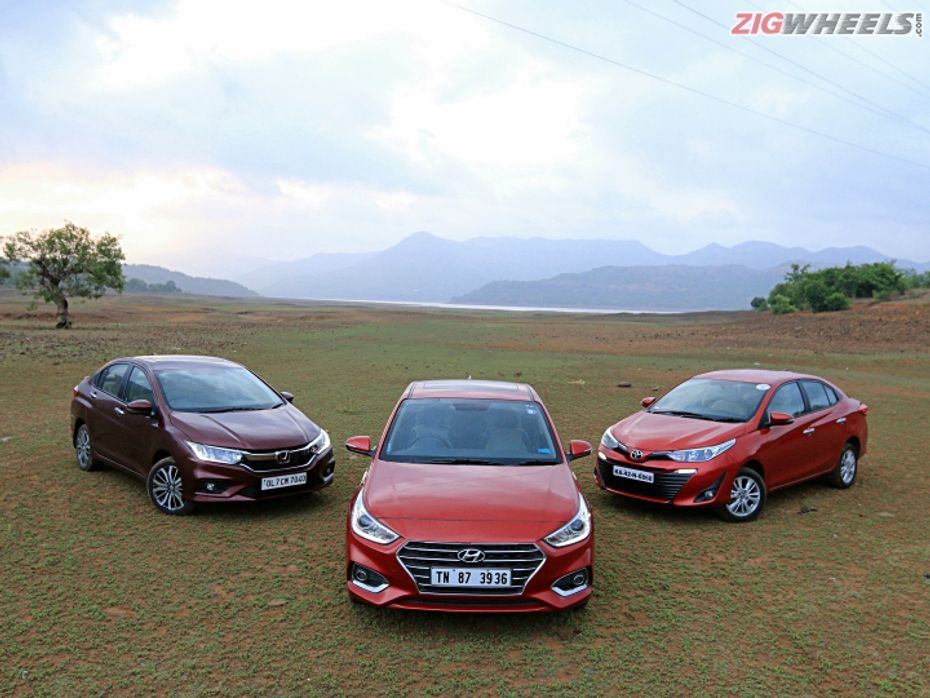
With the Yaris, Toyota made it amply clear it wanted to go for the City’s jugular. The focus was on delivering a luxe experience, a aspect where the Honda tries, maybe a bit too hard. The reason for them sharing the frame space is pretty obvious, then. But we’ve got Hyundai’s potent Verna as well, a sedan that managed to get the better of the City in our petrol-manual comparo. The simple question we’re asking is, does the Yaris have enough to lure you away from these stalwarts while carving out a niche of its own?
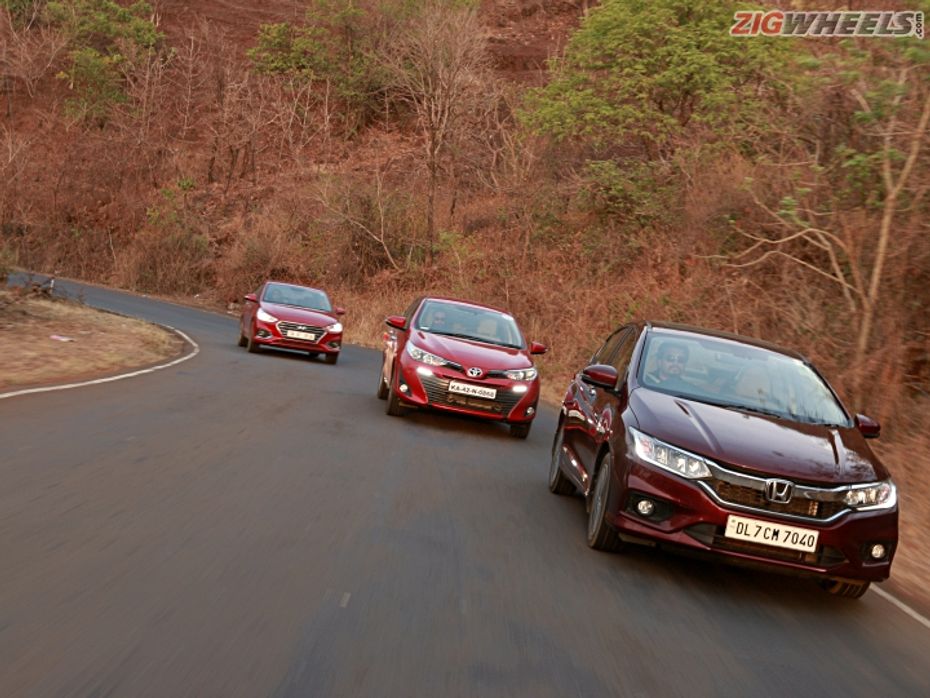
Shut Up And Drive
If you do that in the Yaris, you’d be driving slowly. The refinement of the engine and the finesse of that CVT is borderline unreal. It eggs you on to drive as if you do not have a care in the world, in a relaxed, efficient manner. We have no qualms saying that the Yaris is the easiest to drive in and around the city.
The gearbox is the most intuitive of the lot, and is the best at picking up minor modulations of the throttle. In fact, the gearbox seems like a full generation ahead of the one in the Honda. Unlike CVTs of yore where you have to break out the lead foot to get going, you can breathe in the revs on the Yaris’ A-pedal. It picks up pace smoothly, and the sheer refinement of the engine just makes the experience calming. Of course, it isn’t the most fun to push around and feels rather blah if you do, but as far as commuter automatics go, the Yaris is a pleasant, pleasant surprise.
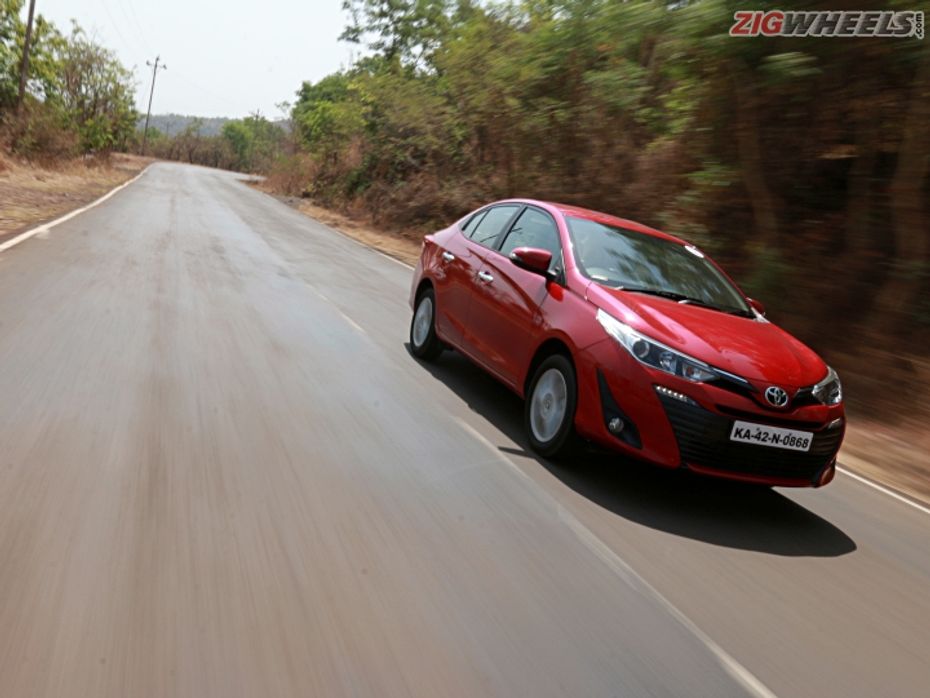
The second surprise here was the Verna automatic. While we only had a small feeler of the slushbox on our first drive, spending time with the car brought out some really appreciable facets. One, it’s quite hassle-free to drive and two, it doesn’t do anything particularly extraordinary. But, in this context, that’s perfectly alright.
It gets the basics spot on, and there’s nothing more we’d expect of the engine-gearbox combination either. It knows when to shift up, knows when to hold the revs and doesn’t hesitate from dropping a few gears under kickdown either. It doesn’t mind a few spirited runs here and there, and that’s when you really begin to miss paddle shifters. Hope you’ve got a notebook in hand, Hyundai! Small hiccups come in the form of the manual mode feeling a notch slower than we’d have liked, and the AMT-like upshift-happy nature of the gearbox every time you take your foot off the gas.
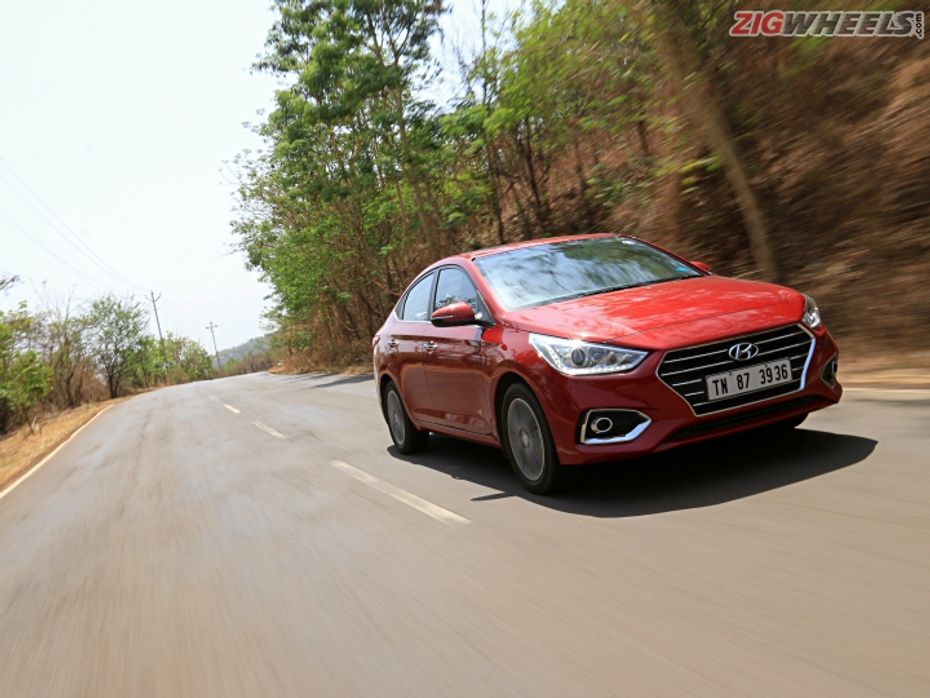
And that’s something you never feel like doing when you’re in the captain seat of the Honda. It’s by far the most “raw” feeling sedan in here. Something that will definitely tickle the enthusiast’s fancy. It’s the only one here to have a proper “S” mode - that should tell you what Honda was thinking. It’s the quickest to get to 100kmph, and quicker to get going once you put the hammer down in-gear as well. Check out the numbers in the table below.

But all that drama does raise an eyebrow. Where’s the refinement gone, Honda? The petrol engine is an absolute gem in the way it delivers all the oomph it has. But it creates quite a racket while doing so. By no means is the i-VTEC unrefined; the flag posts have simply been moved beyond the City’s reach at the moment. The other bug is the transmission. It doesn’t feel as relaxed and easy going as the Yaris’, nor does it feel as hassle-free as the Verna’s. It’s somewhere in the middle. While we can’t fault it for convenience, or smoothness of shifts - its tendency to get confused under part throttle takes a bit away from its easy to drive nature.
| Performance | Toyota Yaris | Honda City | Hyundai Verna |
| Acceleration | |||
| Acceleration (0-100kmph) | 13.39 seconds | 11.90 seconds | 12.04 seconds |
| Kickdown (20-80kmph) | 8.36 seconds | 8.22 seconds | 7.14 seconds |
| Braking | |||
| 100-0kmph | 3.37 secs / 43.61m | 3.20 secs / 41.14m |
2.96 secs / 42.19m
|
| 80-0kmph | 2.71 secs / 27.20m | 2.60 secs / 26.23m |
2.32 secs / 26.26m
|
Penny Pinching
You don’t buy a petrol automatic sedan if you’re worried about fuel costs. Period. We’d recommend buying one only if you fit any or both of these cases: One, you’re adamant you want a petrol car in the garage. Diesel just doesn’t cut it for you. Second, usage is extremely low (sub 30km/day) and you believe the slightly high fuel bill is an acceptable trade off for convenience.
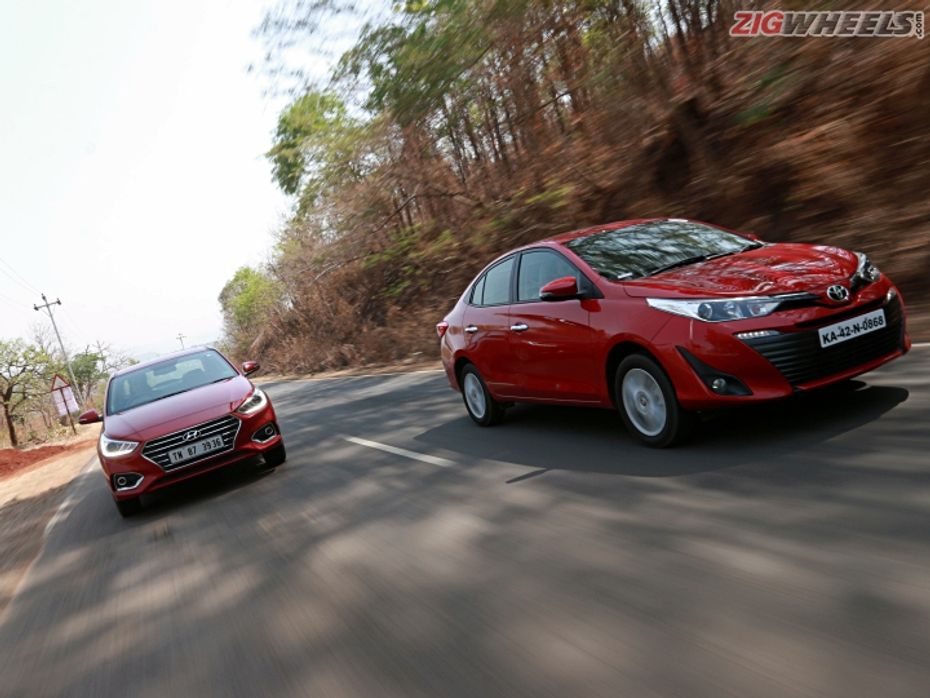
Here are the numbers. And, they’re surprisingly surprising. We expected the Verna to be the least fuel-efficient on both the highway, and city fuel run circuit. It wasn’t. We expected the Yaris and the City to be nearly neck and neck. That wasn’t the case either. And, no. There isn’t a typo in the table. The Yaris did manage to have a nearly identical tested fuel economy in the city and the highway.
| Fuel Efficiency | Toyota Yaris | Honda City | Hyundai Verna |
| City | 16.4kmpl | 11.22kmpl | 12.17kmpl |
| Highway | 16.3kmpl | 16.55kmpl | 18.43kmpl |
Magic Carpet Much?
Back when we tested the manual versions of the City and the Verna, we were collectively surprised at how mature the ride of the Hyundai had become. Well, the Yaris takes that opinion, chews it up and spits it out. Maybe this sounds like a gross exaggeration, but it really is, by far, the best ride quality we’ve experienced in this segment. The way the Yaris gobbles up bad patches, broken roads and the lack of roads of in general is impressive. The hideous-looking 15-inch wheel cloud has a silver lining after all!
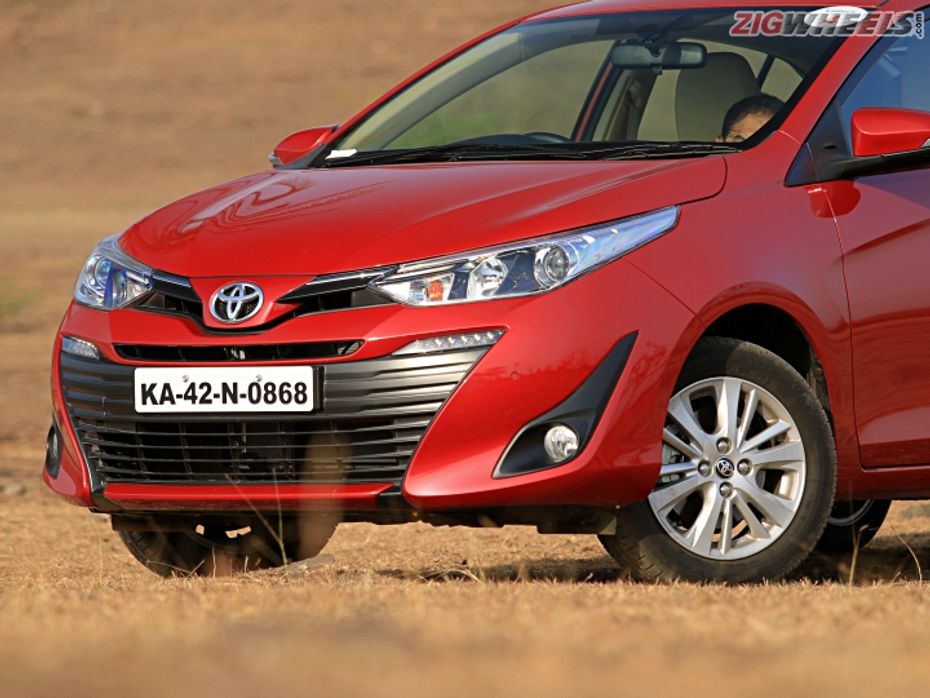
The Verna and the City aren’t uncomfortable per se. But the Hyundai tends to rock about side to side while handling the rough stuff. It can get a wee bit taxing if you’re driving over a continuous patch of broken road. Ignore that and the setup shouldn’t give you a bother. Comfortable inside the city, surprisingly stable on the highway - the springs manage to strike an acceptable balance.
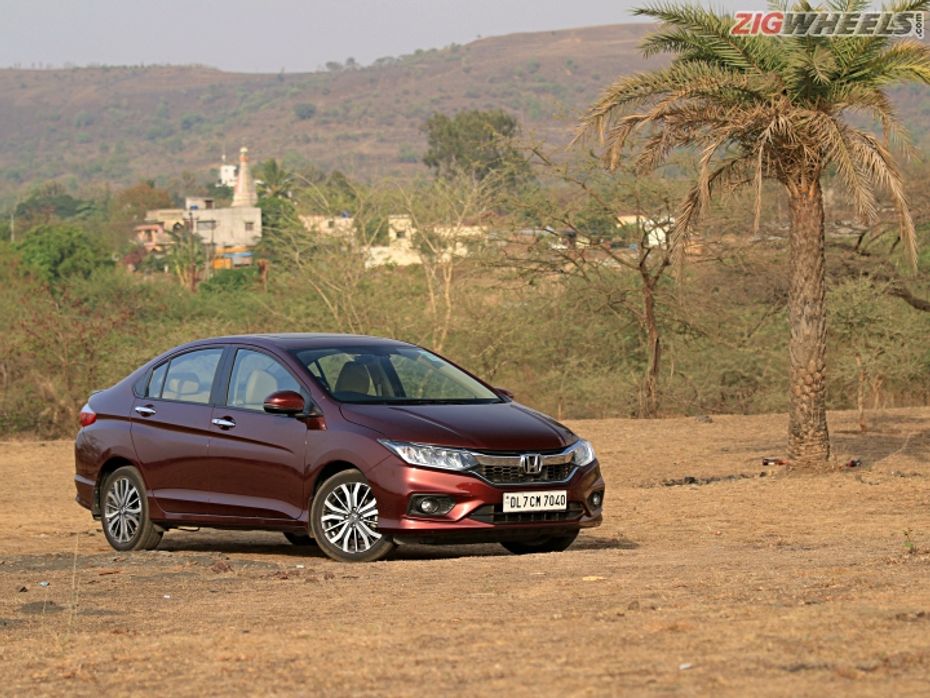
Speaking of the Honda, the experience doesn’t come across as relaxing. You hear the suspension trying to isolate you from the bumps. Any imperfections in the road surface can be felt inside the cabin of the Honda. We’d have preferred a setup that was softer, especially in town. The upside to this is a wider grin around the twisties when you’re making that i-VTEC sing. If that’s something you intend on doing over the weekend, the City is the one that feels like the eager puppy while darting into corners.
Pamper You Silly
That’s what all cars want to do. And, we’re happy to report, all three succeed - in their own unique way.
- Ace of Space
| Measurements - Front Seat | |||
| Parameter | Toyota Yaris | Honda City | Hyundai Verna |
|
Legroom (min-max)
|
870-1070mm | 980-1200mm | 1030-1270mm |
|
Knee room (min-max)
|
575-810mm | 580-800mm | 600-815mm |
|
Seat base length
|
480mm | 510mm | 510mm |
| Seat base width | 485mm | 510mm | 500mm |
|
Seat back height
|
630mm | 580mm | 640mm |
|
Headroom (min-max)
|
915-965mm | 865-960mm | 880-960mm |
| Cabin width | 1275mm | 1390mm | 1385mm |
If you plan on spending most of your time being chauffeur-driven, or will be travelling full-house most of the time, there’s no beating the City. Neither the Yaris nor the Verna come even remotely close to matching the sheer amount of cabin space in the Honda. Again, the numbers are proof. It doesn’t matter what parameter you choose - headroom, shoulder room or kneeroom - the rear seat of the Honda City absolutely creams the opposition.
| Measurements - Rear Seat | |||
| Parameter | Toyota Yaris | Honda City | Hyundai Verna |
| Shoulder room | 1275mm | 1325mm | 1315mm |
| Headroom | 890mm | 895mm | 875mm |
|
Seat base length
|
435mm | 480mm | 490mm |
| Seat base width | 1260mm | 1300mm | 1260mm |
|
Seat back height
|
645mm | 615mm | 695mm |
|
Knee room (min-max)
|
650-815mm | 790-1000mm | 600-840mm |
Special mention to the comfy leather seats that make you feel at ease almost instantly. If we could nitpick (and we will, because why not), we’d say the cabin is set a notch low. If you’ve got elders in the family, be sure to let them test it out before you pay the deposit.
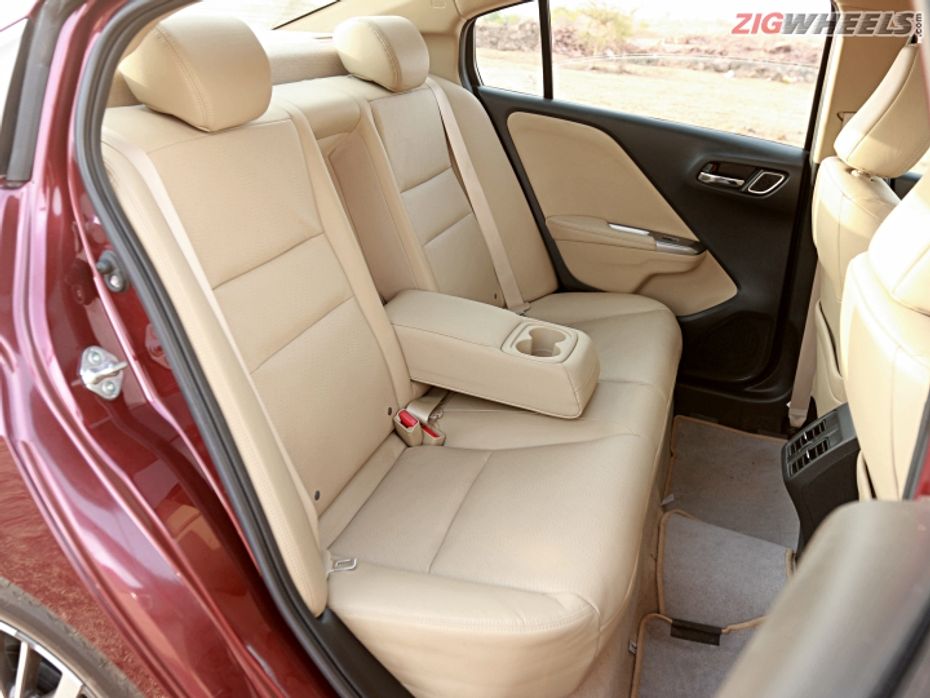
- Peace and Quiet
Toyota’s Yaris excels in matters you can’t really put in the brochure. Shut the door of the Yaris and you’re on your own. Literally. It manages to substantially reduce every noise that classifies as annoying. That can be the blaring horn from the truck that’s doing 30 in the fast lane, to the incessant revving of a bro on an ill-maintained RX100, and humans in general. The Yaris also attempts to feel like a bigger car than it really is. There’s an overdose of beige, and that does work well to give it the sense of space. Because, when you break out the measuring tape, you’d realize it isn’t as spacious as it looks. In fact, with the driver’s seat set for the same driver, space at the rear is a notch less compared to the Verna. And that’s saying something.
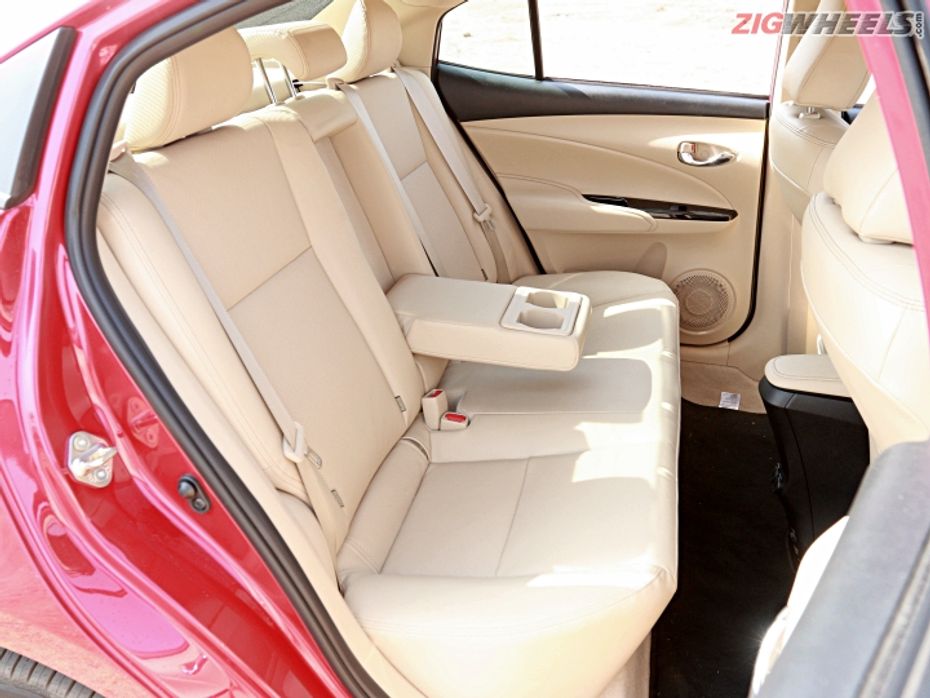
- The Sober One
Coming to the Hyundai, the Verna simply doesn’t feel like a big car on the inside. In fact, a few colleagues quipped if an owner would really feel the difference if he/she upgraded from an Xcent or a Grand i10. What amplifies the sense of claustrophobia is the sharp rake of the roofline that eats heavily into the headroom, and the extensive use of black in the upholstery. If the colour theme for the upholstery was as much as inverted, the vibe of the cabin would’ve been entirely different. Add the as-straightforward-as-it-gets design of the dash into the mix and it doesn’t paint a very inviting picture. It’s very Euro-car-like in that sense, and everything feels “just right”. But that’s something a whole lot of us don’t mind (and in some cases, actually want).
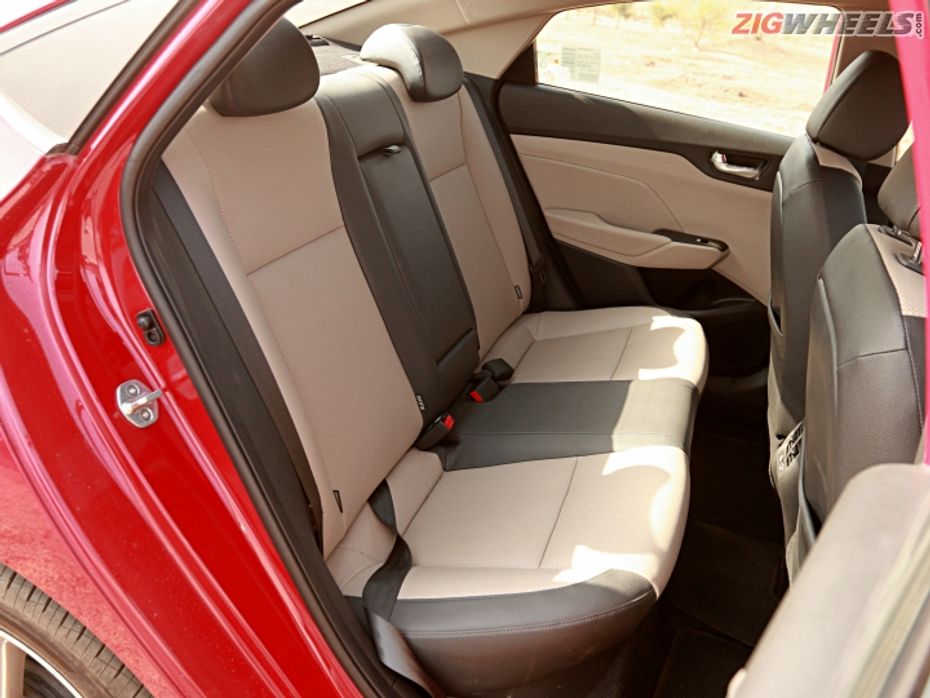
Tech Them Out!
We’re sure you’re pulling your hair out by now if you’re comparing the three based on their feature list. Let’s simplify, shall we? The top-spec versions of all cars get quite a few features that are common across the board. You’d find automatic climate control, steering-mounted audio controls, cruise control, front and rear arm rests, keyless entry and go in all three.
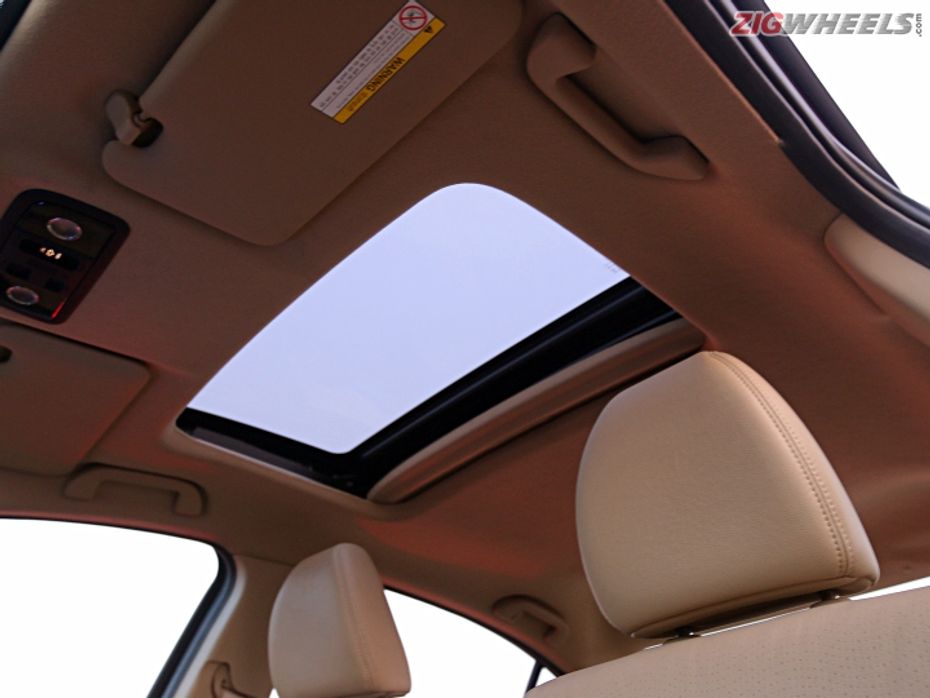
Then there are features that only one car misses out. The Yaris and the Verna feature rear parking sensors and a rear blind that the City skips. Then there are the oh-so-desirable paddle shifters that’s missing only on the Verna. Finally, both the Honda and the Hyundai feature 16-inch alloys, a sunroof, a dead pedal and an auto-dimming rear view mirror, which the Toyota misses.
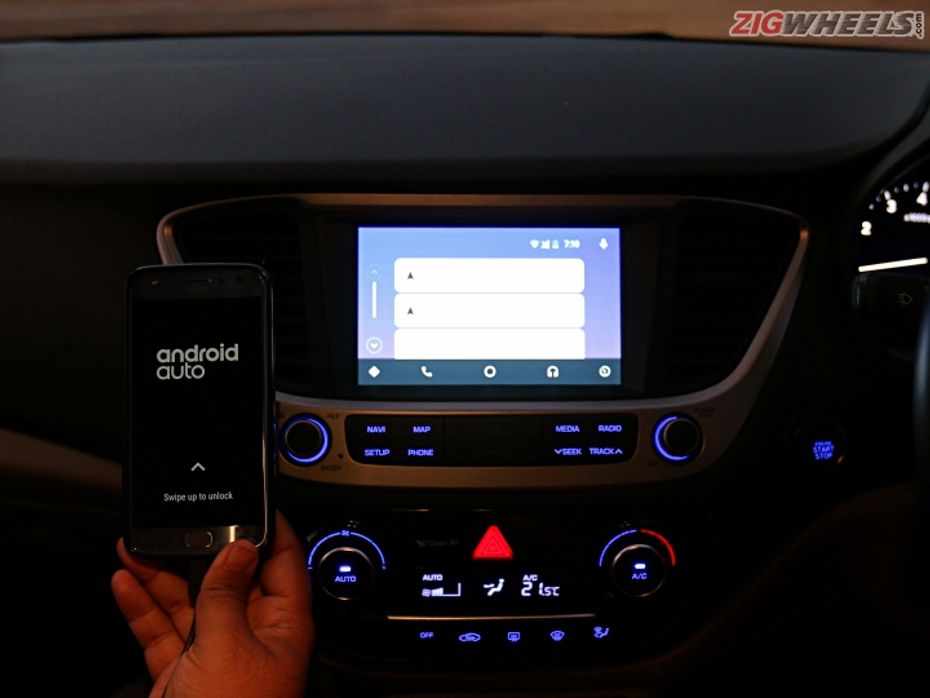
But, the Yaris hits back with quite a few unique features of its own. Front parking sensors, a powered driver’s seat, a 4.2-inch color TFT display in the instrument cluster, a 60:40 split for the rear bench and the roof-mounted rear AC vents are thoughtful additions. Honda’s trump cards include the all-LED lighting, an 8-speaker audio system, an HDMI port, the touch panel for the climate control and the soft-touch insert on the dash. Not that the Verna is far behind, for it features ventilated seats, projector fog lamps and a hands-free boot release.
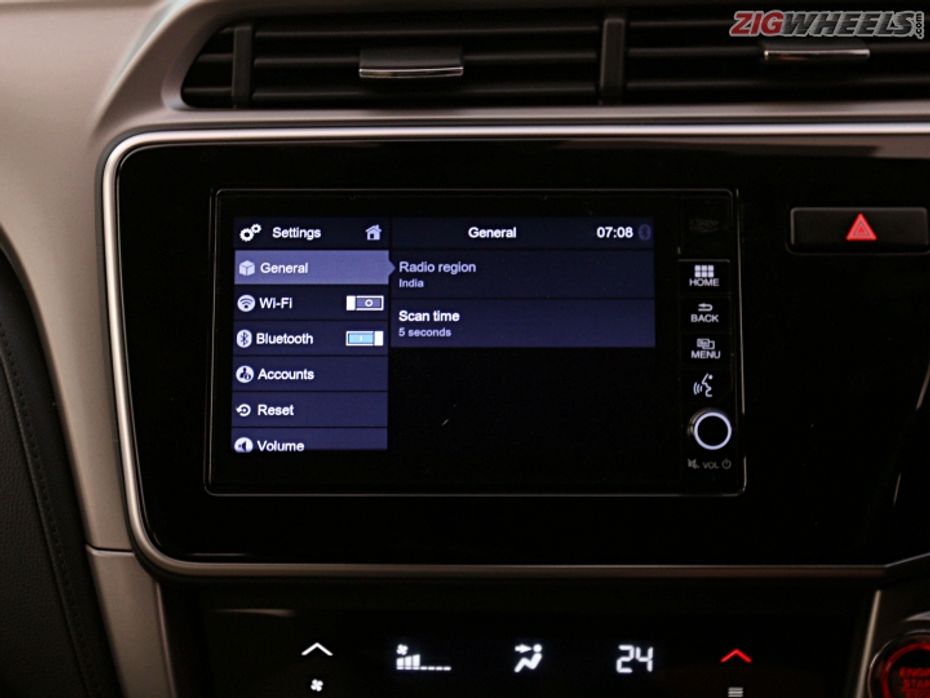
If you want us to pick the best balance, we’d say it’s the Verna. In terms of features, the others don’t offer anything biblical to make you want to change your mind. Also, it features the best infotainment out of the lot. The 7-inch touchscreen on the Hyundai not only has a better user interface, it also features crisper graphics and is the quickest to respond to inputs. It does feel like an age ahead of the aftermarket-looking DigiPad in the Honda and the afterthought of a touchscreen in the Yaris. Now, we’re sure Honda can fix the bugs in the DigiPad (they’ve succeeded with the DigiPad 2.0 in the Amaze and it’s a matter of time before the update makes its way to the City), but Toyota really needs to reconsider that screen. It takes a full 15 seconds to boot up and we had multiple issues with pairing and streaming via Bluetooth.
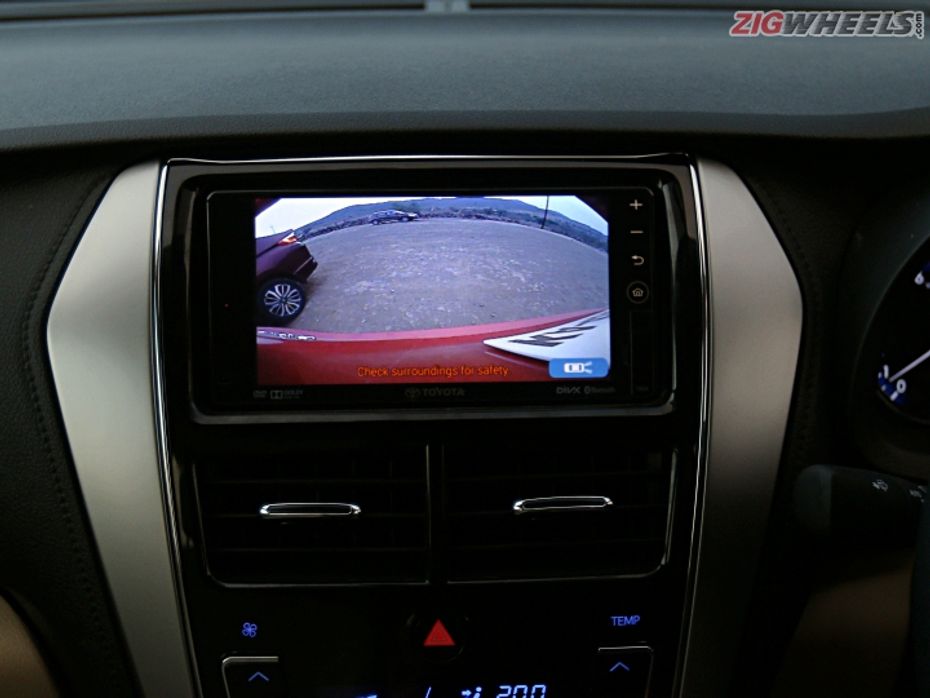
The other big reason for picking the Hyundai’s touchscreen over the others is the availability of Android Auto and Apple CarPlay and not just MirrorLink. On a small side note, when you switch to reverse - the Yaris gives you no guidelines, the City gives you static lines, and the Verna gives you dynamic lines that turn according the steering input. It’s the little things that count.
Don’t Forget The Looks
If we had to pick one based purely on the way it looks, we’d run for the keys of the Honda. And that’s a bit confounding, isn’t it? It’s the oldest car here, but that design simply refuses to age. It’s the head-turner of the group for sure. The sharp lines, the dazzling LED headlamps and that low-slung stance do call for attention.
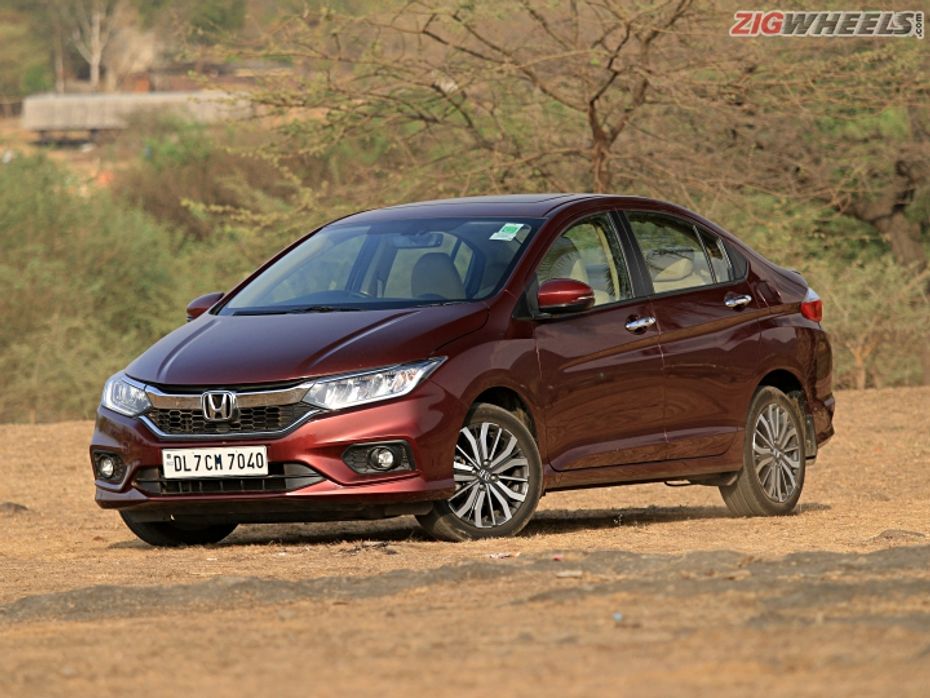
The Verna comes in a close second, but it does look like a generic Hyundai. The flash value has been toned down considerably compared to the version it replaces - and that can go either ways with a prospective buyer. We prefer the grown up version for sure with its subdued lines, bigger cascade grille and those neat 16-inch alloys.

On the other hand, the Yaris just looks a bit boring. The wheels don’t sit right with the design, and it appears a bit too bulky from the side. It did appeal a whole lot to the oldies in the team, though.
Pick One Already
Let's start with the Honda City. Which, let's face it, has the most emotional pull of the three and is a great family car. It makes you want it, with its super spacious cabin and that wow factor in terms of design inside and outside. Where it's lacking, though, is in finesse. The ride is firm, the noise insulation is weak, the power train isn't as polished as we'd have liked and while you do get the big sedan experience, it falls back in the last mile in delivering the luxury experience. That said, at Rs 13.70 lakh, the City is quite a lot of car for the money.
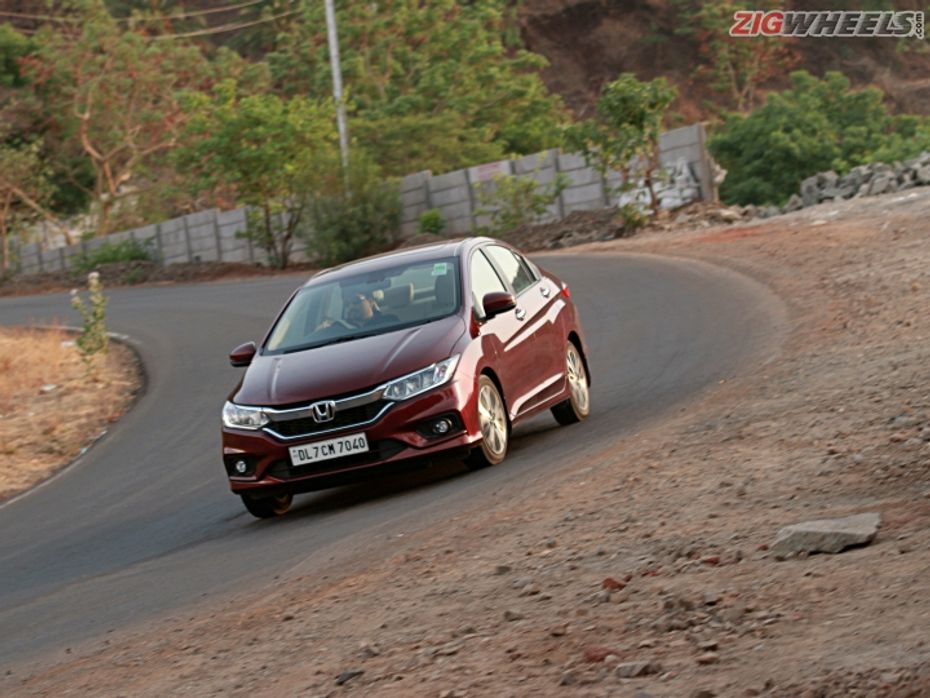
That’s precisely where Toyota’s Yaris delivers in spades. To answer the opening question - yes it manage to lure you, by focusing on things you won't see in the brochure. The ride quality, noise insulation, the sense of premiumness and the smoothness of the CVT are easily the best among the lot. If you’re willing to trade some flash value for some everyday sensibility, the Yaris makes a strong case. So, in a segment that has something for everyone Toyota has created a niche of its own. Of course, there are caveats. The cabin is best suited for four, not five. And the asking price of Rs 14.07 lakh, to put it simply, is a bit too much.
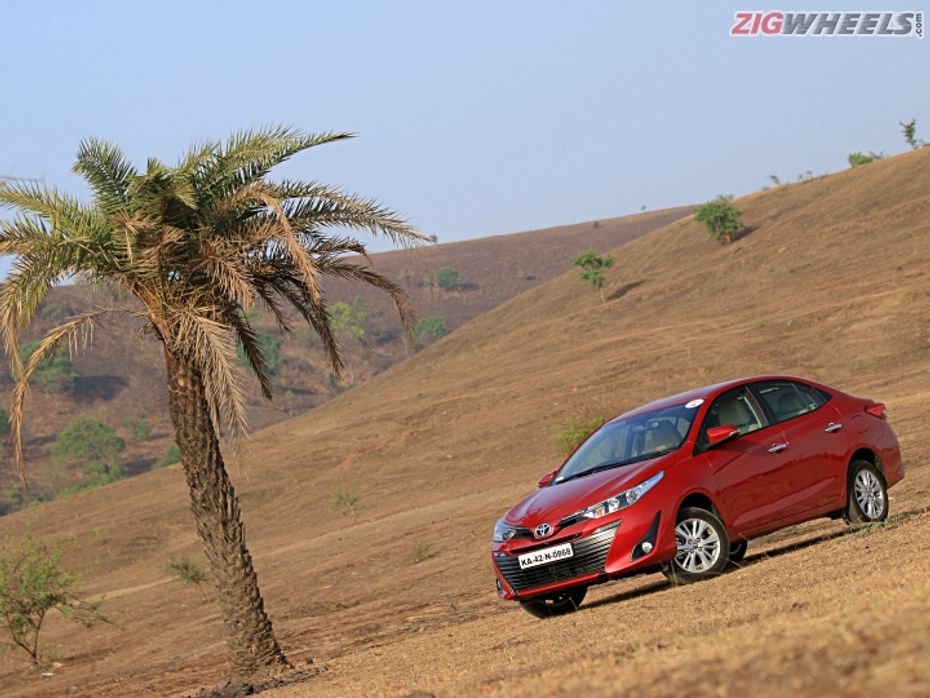
And that brings us to the Hyundai Verna, which at Rs 12.56 lakh delivers phenomenal value for money. The features list isn't just expansive, it strikes the best balance of novelty and functionality. It also strikes an impeccable balance of ride, drivability and quality. Downsides include the cramped rear and that staid cabin design. The rear seat space is the only potential deal breaker in our books.
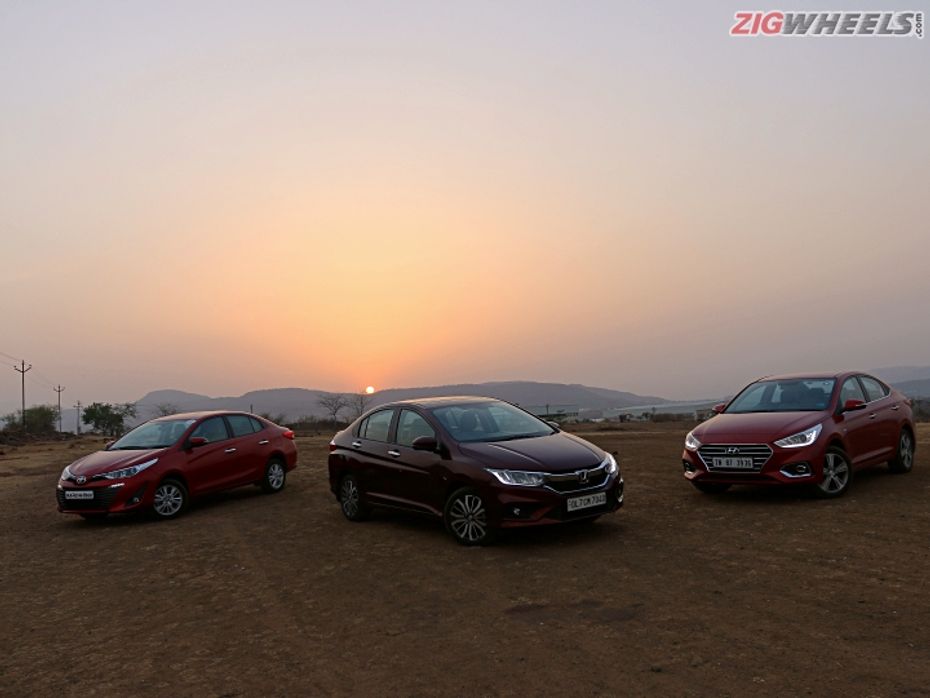
The Verna doesn’t really excel at anything in particular, really. But it just manages to strike a balance that is acceptable to most buyers in this segment. What sweetens the deal is the price. It’s the Hyundai, then, that’s the most sensible pick of the lot. The City and the Yaris will have their own audience, since both manage to wow the buyer in their own ways. We’re just glad there are three good, can’t-go-wrong cars to choose from.

2017 Honda City: First Drive Review

2017 Hyundai Verna Review: First Drive

Toyota Yaris 2018 First Drive

Toyota Yaris vs Honda City vs Hyundai Verna : Which ones the smarter...

Toyota Yaris vs Honda City vs Hyundai Verna

Toyota Yaris vs Honda City vs Hyundai Verna: Review In Pictures

The Toyota Yaris Goes Sporty With A New GR-S Variant In Malaysia

Toyota Yaris To Get A Stealthy Limited Black Edition!

2021 Toyota Yaris Facelift: Your First Look Ahead Of Its July 25 Debut

Government Employees Can Now Buy A Toyota Yaris For Rs 9.12 Lakh
 Maruti Ciaz
Maruti Ciaz
India's largest automotive community
 Here Are Some Adrenaline Pumping Experiences From Auto Expo 2025 That You Should Not Miss!
Here Are Some Adrenaline Pumping Experiences From Auto Expo 2025 That You Should Not Miss!
 All You Need To Know About The Surprise Element At Auto Expo 2025: BMW iX1 LWB
All You Need To Know About The Surprise Element At Auto Expo 2025: BMW iX1 LWB
 Hyundai Creta Electric Reaches Dealerships, Here’s A List Of Its Pros And Cons Before You Check It Out!
Hyundai Creta Electric Reaches Dealerships, Here’s A List Of Its Pros And Cons Before You Check It Out!
 MG Showcases A PHEV At Auto Expo 2025: The MG HS PHEV
MG Showcases A PHEV At Auto Expo 2025: The MG HS PHEV
 Toyota Fortuner
Rs. 33.43 Lakh
Toyota Fortuner
Rs. 33.43 Lakh
 Toyota Innova Crysta
Rs. 19.99 Lakh
Toyota Innova Crysta
Rs. 19.99 Lakh
 Toyota Urban Cruiser Hyryder
Rs. 11.14 Lakh
Toyota Urban Cruiser Hyryder
Rs. 11.14 Lakh
 Toyota Camry
Rs. 48.00 Lakh
Toyota Camry
Rs. 48.00 Lakh
 Toyota Hilux
Rs. 30.40 Lakh
Toyota Hilux
Rs. 30.40 Lakh
 Maruti Dzire
Rs. 6.79 Lakh
Maruti Dzire
Rs. 6.79 Lakh
 Hyundai Verna
Rs. 11.07 Lakh
Hyundai Verna
Rs. 11.07 Lakh
 Toyota Camry
Rs. 48.00 Lakh
Toyota Camry
Rs. 48.00 Lakh
 Honda Amaze
Rs. 7.99 Lakh
Honda Amaze
Rs. 7.99 Lakh
 Hyundai Aura
Rs. 6.54 Lakh
Hyundai Aura
Rs. 6.54 Lakh